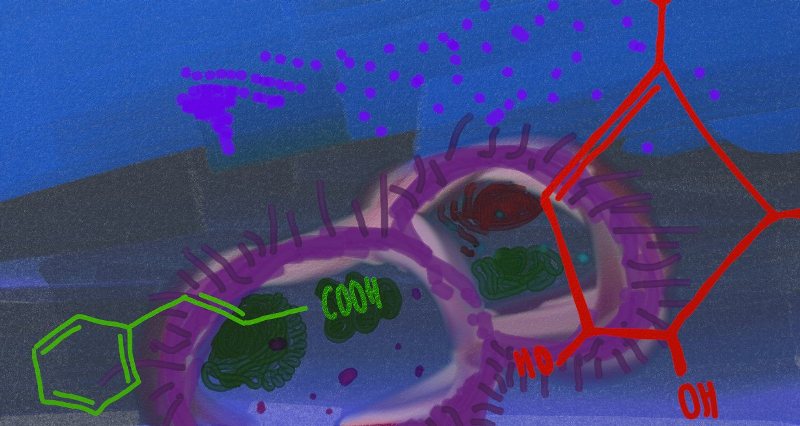|
Due to environmental concern, government regulations and economic considerations, there has been a consistent increased effort in recycling endeavours over the past years. Several hundred million metric tons of municipal solid waste is disposed of in Canada and the United States annually. Paper products alone account for approximately 45% of municipal solid waste by weight before recycling (N. Lark et al.). As a result, recycling paper products not only affects the upstream processes in paper production (where raw materials are acquired), but also has consequences on the downstream portion of paper use (waste-disposal).
Recycled paper processing plants use paper as their feedstock and recover fibre that can be used to produce new paper products. Paper fibre cannot, however, be recycled endlessly. It is generally accepted that a fibre can be used four to six times before it becomes too short to be utilized in new paper products. This unusable fibre accounts for 15-20% of the recycled fibres and is typically disposed of in a waste stream to landfills (N. Lark et al.).
The major constituent of these paper fibres is cellulose, a homopolysaccharide made up of β-D-glucose. Ergo, the unusable, short fibre in the waste stream of paper recycling plants is a significant source of potentially exploitable cellulose. Aromatics represent a potentially lucrative chemical endpoint for this cellulose, having high price per unit mass and a sustainable market in both the pharmaceuticals and cosmetics industries. The conversion of this waste into valuable industrial chemicals is a relatively unexplored business opportunity and is desirable from the standpoint of green and clean processing.
Our Solution
As technologies continue to improve, there has been increasing interest in exploring the use of biomass as a renewable resource. Biomass is typically a by-product of an industrial process and considered waste. In particular, the paper sludge produced by paper recycling plants is presently disposed of via landfill or burnt. This is a significant source of potentially exploitable cellulose that can not only be used to produce high-value chemicals but will also have a positive impact on waste management. Additionally, paper sludge is an attractive feedstock compared to other lignocellulosic biomass because is processed prior to its utilization and requires no pre-treatment as a result.
Many studies have concentrated on the conversion of the cellulose in the paper waste to different types of value-added chemicals. Primarily, it has been considered for conversion to ethanol (Yamshita et al. 2006; Vamvuka et al. 2009; Kang et al. 2010, 2011) and lactic acid (Marques et al. 2008; Mukhopadhyay 2009). Our business plan focuses on the production of aromatics from this cellulose. Aromatics represent a potentially lucrative chemical endpoint, having high price per unit mass and a sustainable market in both the pharmaceuticals and cosmetics industries.
Our company’s proposed process has two parts: in the first, cellulose from waste sludge from recycling plants is converted into glucose; in the second, glucose from the first part is used as a feedstock for the production of aromatic chemicals. In the glucose-aromatic conversion, we plan to use only a single metabolic pathway with “on and off switches” at each “step”. This gives us the freedom to produce any intermediary compounds in addition to the natural end product. The current proposed pathway will allow us to produce either shikimate or cinnamic acid derivatives using the method described above. Possible switch activators include temperature pH, or the addition of an inhibiting chemical such as phosphate.
Our solution encompasses two sections:
Process Design
Genetics
The Competitive Landscape
Shikimic acid is a vital precursor to and major bottleneck in the production of the anti-influenza drug Tamiflu. Taking into account the recent H1N1 and H5N1 influenza outbreaks and reports of shikimic acid shortages in 2005, demand for the chemical seems likely to increase should another pandemic scare occur. Currently, pharmaceuticals giant Roche produces the majority of the world's supply of shikimic acid, holding an effective monopoly on the market. Their method of extraction involves isolating the compound from Chinese star anise, at a yield of approximately 30g of seed to very 1g of shikimate[cite]. Furthermore, as demonstrated by the Tamiflu shortages announced by Roche in 2005, a bad harvest will lead inevitably lead to mass shortages in the drug supply.
With this in mind, academics have disputed the infeasibility of producing the chemical by other means. Alternative routes to Tamiflu or sources shikimic acid may prove to be possible sources of competition for Upcycled Aromatics' major market. They include the usage of aminoshikimic acid, biosynthesized by genetically modified baceria, over shikimic acid as a chemical starting point [http://pubs.acs.org/doi/abs/10.1021/ol049666e], as well as extraction of shikimic acid from pine needles [http://www.ncbi.nlm.nih.gov/pubmed/21243780]. However, commercial viability on scale-up has yet to be proven for most proposed processes.
Current industrial production already involves fermentation of genetically modified E. coli to a limited extent, Upcycled Aromatics can offer a green and reliable souce of shikimic acid.
Cinnamic acid, converted to its ester form, is an organic chemical with a wide variety of applications ranging from sweeteners to pharmaceuticals. Although its value may be lower on a per gram basis when compared to shikimic acid, a wider variety of applications may mean increased profits depending on current demand. The scale of annual global production is in the thousands on tons as of the year 2000, and is likely to grow as demand for artificial sweeteners increases [http://onlinelibrary.wiley.com/doi/10.1002/14356007.a07_099/pdf].
Major producers include Bayer (Germany), DSM (Netherlands), and Kay Fries (USA) [ibid].
Typically, the chemical is produced by a condensation of benzaldehyde and acetic anhydride in the presence of a sodium acetate catalyst, and can yield over 80% cinnamic acid based on consumed benzaldehyde [http://www.scribd.com/doc/30133427/Cinnamic-Acid-Cinnamaldehyde-And-Cinnamyl-Alcohol]. Our process avoids the use of potentially polluting organic solvents in favour of converting something with negative value (paper sludge) into a desirable high-value platform chemical.
Our proposed feedstock, paper and recycling mill sludge, has little to no market competition due to its widespread perception as waste with negative value. The conversion of sludge to glucose shows promise (Banerjee 2011). Other possible uses include feedstock for the production of ethanol (Furstein and Sacakerelles, 2003; Yamshita et al. 2006; Vamvuka et al. 2009; Kang et al. 2010, 2011) and lactic acid (Marques et al. 2008; Mukhopadhyay 2009), but other possible applications remain undeveloped.
Our Competitive Advantage
Upcycled Aromatics’ competitive advantage lie in our flexible process, our choice of feedstock, and our tight integration between process and genetics.
As mentioned previously, it is impossible for a recycling plant to process the same paper more than a few times before the fibres are deemed too short and disposed of. Our revolutionary strategy is to utilize these once useless fibres as the feedstock for our process, ultimately turning what was once waste into valuable industrial chemicals important in both the pharmaceutical and cosmetics industries.
Our strategy ultimately allows us to save significantly on operating costs, and since our initial prototype facility will be located at a recycling plant onsite, costs associated with the feedstock will be negligible if not zero. Many people are currently using cellulose as a feedstock, for example, as a precursor to bioethanol, but with Upcycled Aromatics' novel process, we are able to virtually eliminate any and all associated transportation costs, which constitute a huge energy sink in most other cellulosic approaches. Our revolutionary idea, while increasing our margins, also gives us the opportunity to funnel the money saved into other endeavours, such as expansion or R&D.
The flexibility our process offers us the option to respond to shifting markets. Although the value of shikimic acid is many times higher than that of cinnamic acid and its derivatives, any lull in demand can be compensated for by simply flipping our genetic switch and changing our product. On the other hand, any future spikes in the price of shikimic acid (perhaps due to another pandemic scare) will allow us to take advantage of such opportunities. Furthermore, the switchability of Upcycled Aromatics will insulate us from price crashes in any one of our possible products. Furthermore, the semi-permanent, modular nature of the process allows us to avoid costs in the transportation of glucose, and allows us to be consistent in the design and quality of our "tack-on" plants.
Process and genetics in Upcycled Aromatics have been developed in tandem. Such a relationship results in a great deal of synchronization between these two very different areas, ensuring that we will never experience any disconnect between biology and engineering. As these feed back onto one another in an iterative process, improvements in one will always be a fruit of and perhaps a seed for improvements in the other.
The G-Map
View Larger Map
Countdown
Concept Art

Flickr badge
Business model
| 
 "
"







